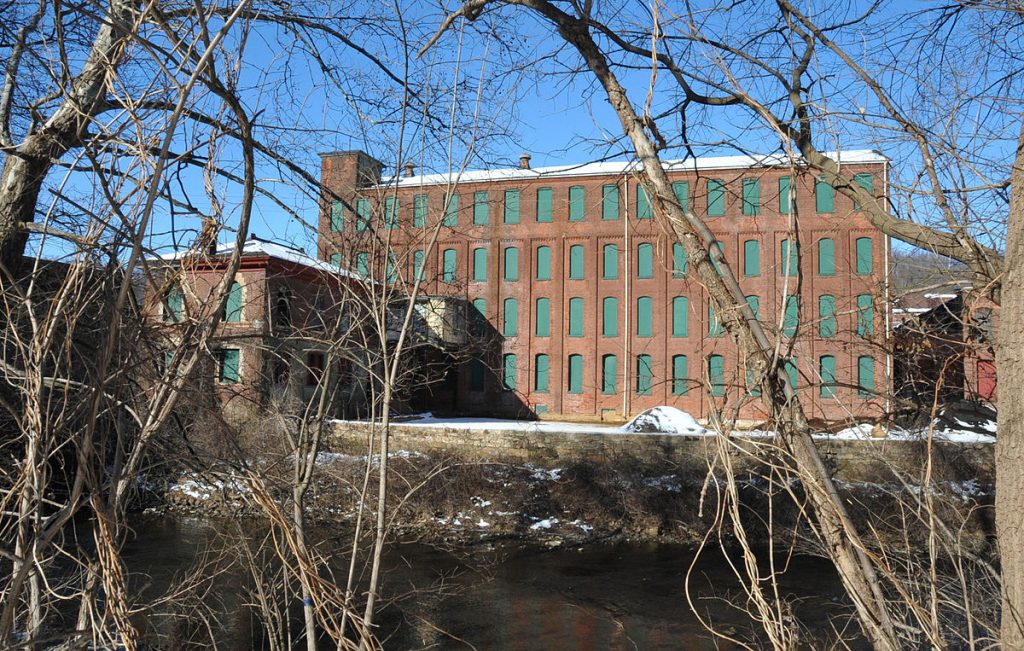
Pennsylvania’s first silk mill opened in Scranton in 1873, and the first silk mill in the Lehigh Valley opened in Allentown in 1881. At one time, there were more than 300 silk mills in Pennsylvania and approximately 75 in the Lehigh Valley. At its height in 1920, the silk industry was the largest employer in the state, with one of every three silk workers in the United States from Pennsylvania.
Production flattened throughout the 1920s, as overseas silk products and less costly synthetic products infiltrated the marketplace. The Catoir Silk Company, which owned the last operating silk mill in the Lehigh Valley, closed in 1989.
Brothers Robert and Herman Simon, owners of the R&H Simon Silk Company, built several initial mill buildings at this location along the Bushkill Creek in 1883. The creek provided them easy access to the water needed for both production and sanitation. These facilities consisted of a main mill building, boiler-engine house, and office of brick design following the late 19th-century Industrial Romanesque style of their earlier Union Hill, New Jersey, facility.
The Easton facility had an initial workforce of 250, and after several expansions, employment skyrocketed to 1,060 by 1899, and production increased accordingly. The power and engine facilities grew in size to become one of the most modern in the area, rated at 2,000 horsepower. Employment eventually rose to 1,200 workers, and machinery of various types numbered approximately 1,500. All of the new buildings and additions, up to and including this period, follow the late 19th-century Industrial Romanesque style, maintaining architectural stylistic unity within the complex.
Robert Simon died in 1901, leaving Herman to continue the business. After some additional enhancements and additions, in March 1913 the R&H Simon Easton and Union Hill plants were heralded by Commercial & Financial Chronicle as ranking “among the model establishments of the world, whether as regards construction, equipment or administration.”
Over the last several decades, many old mill complexes have been creatively redeveloped for new uses while preserving the unique architectural and industrial heritage of their structures. Their sturdy construction, high ceilings, expansive open spaces, and propensity for allowing in natural light often make them well-suited for adaptive reuse.
In 2006, the Easton Redevelopment Authority acquired the former R&H Simon Silk Mill to help spur its redevelopment and reuse. The property has undergone a transformation as a mixed-use development with retail, commercial, and residential components. The complex remains architecturally important as a unified collection of late 19th- and 20th-century industrial buildings and as a model business establishment emerging from the decline of the American silk industry.
